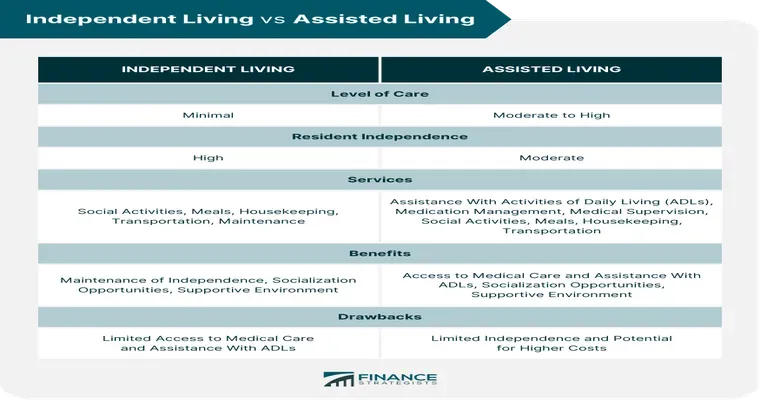When it comes to choosing the right living situation for yourself or a loved one, understanding the differences between "independent living" and "assisted living" is crucial. Each option offers unique benefits, catering to various needs and preferences. In this article, we will explore the key distinctions, advantages, and considerations for both independent and assisted living to help you make an informed decision.
What is Independent Living?
"Independent living" is designed for seniors who are relatively self-sufficient and capable of managing daily tasks without assistance. It typically involves living in a community or facility that offers amenities and social activities while providing a supportive environment. Residents enjoy their independence, often in their own apartments or cottages, with access to communal areas for socialization and leisure activities.
What is Assisted Living?
On the other hand, "assisted living" provides a higher level of care for seniors who require some help with daily activities. This option is ideal for individuals who may struggle with tasks such as bathing, dressing, or medication management but still want to maintain a degree of independence. Assisted living facilities typically offer 24-hour support staff, personalized care plans, and various social activities to foster a sense of community.
Key Differences Between Independent Living and Assisted Living
1. "Level of Care": The most significant difference lies in the level of care provided. Independent living offers minimal assistance, while assisted living provides more comprehensive support tailored to individual needs.
2. "Living Arrangements": In independent living, residents usually have their own private living space, whereas assisted living often involves shared or private rooms with access to communal facilities.
3. "Social Activities": Both options encourage social interaction, but assisted living facilities may offer more structured activities aimed at fostering relationships among residents who may have similar care needs.
4. "Cost": Generally, independent living tends to be less expensive than assisted living due to the reduced level of care provided. However, costs can vary widely depending on location, amenities, and services offered.
Benefits of Independent Living
Choosing "independent living" can offer numerous benefits, including:
"Autonomy": Residents enjoy the freedom to live life on their own terms, with the ability to control their daily routines.
"Social Engagement": Many communities offer social events, exercise classes, and hobby groups that encourage interaction and camaraderie.
"Maintenance-Free Living": Many independent living facilities take care of maintenance and housekeeping, allowing residents to focus on leisure activities.
Benefits of Assisted Living
The advantages of "assisted living" include:
"Personalized Care": Residents receive tailored care plans that address their specific needs, ensuring that they receive the right level of support.
"Safety and Security": With staff available 24/7, residents benefit from immediate assistance in case of emergencies, providing peace of mind for both residents and their families.
"Community Support": Assisted living facilities foster a sense of belonging, making it easier for residents to build relationships and support networks.
Considerations When Choosing
When deciding between independent living and assisted living, consider the following factors:
"Health Needs": Evaluate the current and anticipated health needs of the individual. If significant assistance is required, assisted living may be the better option.
"Lifestyle Preferences": Think about the level of independence desired and the type of social environment that would be most beneficial.
"Financial Situation": Assess the budget and long-term financial implications of each living arrangement.
Conclusion
Choosing between "independent living" and "assisted living" is a significant decision that requires careful consideration of personal needs, lifestyle preferences, and financial factors. Both options provide supportive environments tailored to seniors, allowing them to thrive in their later years. By understanding the key differences and benefits of each, you can make an informed choice that best suits your or your loved one's needs. Whether you prioritize independence or require assistance, there is a suitable living arrangement available to enhance quality of life.





